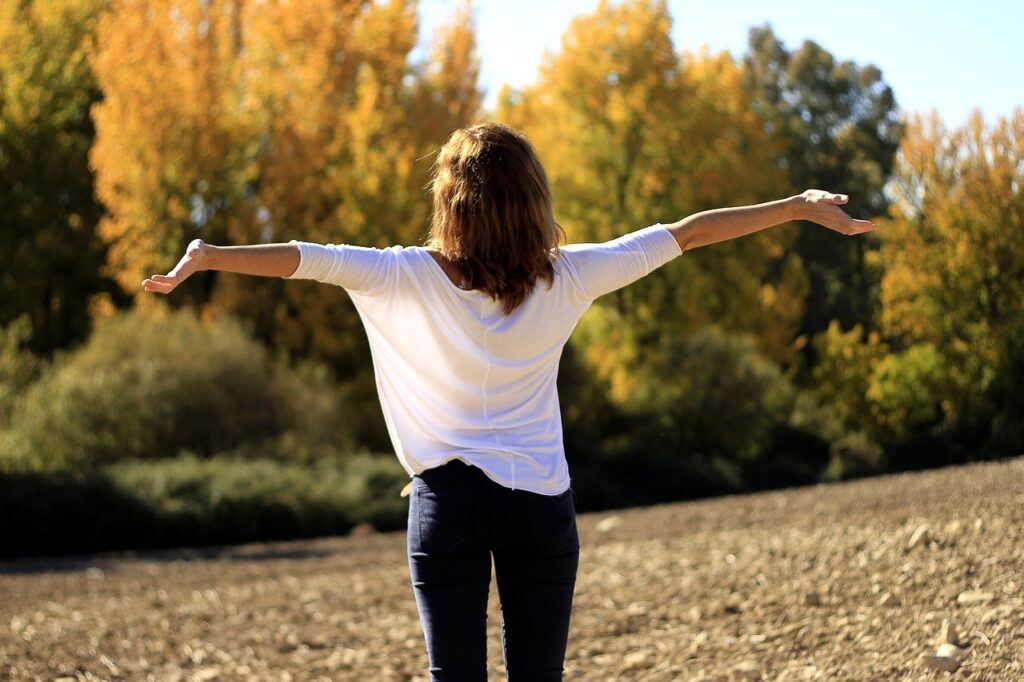In the course of one’s life, it is almost inevitable to encounter distressing situations that trigger feelings of anxiety. Perhaps you have received an email from your supervisor with the ominous subject line “We need to talk,” a message that instantaneously sets off a sense of apprehension. The subsequent anticipation of the impending meeting, along with thoughts revolving around potential issues or explanations, inundates your thoughts.
As the appointed time for the meeting draws near, the manifestations of anxiety within your body intensify. You may have experienced a sinking sensation in your stomach as the initial indication. Subsequently, as you settle into the chair across your boss’s desk, you notice an accelerated heartbeat coupled with the onset of sweaty palms. These symptoms continue to unfold, accompanied by rapid and shallow breathing. In the midst of this escalating turmoil, a piece of advice emerges: “Take a deep breath!”
However, a question arises – how effective is this counsel? Many individuals have received the suggestion that deep breathing can alleviate stress, yet does it genuinely offer relief? The concise response is, surprisingly, “No.” To fully comprehend the counterproductive nature of taking deep breaths, it is imperative to delve into the intricacies of the human respiratory process.
The Mechanics of Breathing
Breathing transpires automatically; for the most part, we are scarcely conscious of this fundamental bodily function. The regulation of breathing is overseen by the autonomic nervous system, comprising two primary divisions:
The sympathetic nervous system (SNS), which triggers the body’s fight-or-flight response.
The parasympathetic nervous system (PNS), which induces relaxation following stimulation.
These two systems closely mirror the respiration process. Inhalation entails the diaphragm descending and the thoracic cavity’s volume expanding as the lungs take in air. This process, while filling the lungs, also exerts pressure on the heart’s walls, leading to a constriction in blood flow to and from the heart. This constriction prompts an increase in heart rate, activating the fight-or-flight response. Conversely, exhalation involves the diaphragm ascending and the thoracic cavity’s volume decreasing as the lungs expel air, inducing a state of relaxation.
In essence, it is the act of exhaling, rather than inhaling, that facilitates bodily relaxation.
The Pitfalls of Overbreathing
With the groundwork of the breathing process established, let us examine the recommendation to “take a deep breath.” If executed hastily, this action can result in overbreathing, a phenomenon broadly defined as a breathing pattern that expels excessive carbon dioxide, subsequently leading to reduced cerebral blood flow – a state known as hyperventilation. Typically, overbreathing arises during panicked or stressful circumstances.
Those advising individuals to “take a deep breath” likely intend to avert overbreathing and hyperventilation. However, even inhaling copious amounts of air and retaining it constitutes overbreathing, as it activates the sympathetic nervous system.
Optimal Breathing Techniques
Given the propensity to respond to anxiety and panic with overbreathing, there exists an avenue for proactive change in our breathing rate. We possess the capacity to manipulate our breathing. This capacity empowers us to counteract overbreathing with a conscious breathing pattern geared toward inducing relaxation.
In scenarios where you find yourself grappling with anxiety symptoms at your boss’s desk, the alternative approach suggests concentrating on prolonging the exhalation, rather than resorting to deep inhalation.
Certain researchers propose a specific inhalation-to-exhalation ratio that proves effective when striving for a state of relaxed respiration. For example, it is recommended to breathe following a 4:6 ratio – dedicating 40% of the breath cycle to inhalation and 60% to exhalation. While performing this type of breathing, it is important to emphasize “low and slow” diaphragmatic breathing, focusing on breath location, seamless transitions between exhalation and inhalation, and a thorough, unhurried exhalation, all the while not fixating on inhalation depth.
While the precise breath count conducive to your relaxation might hinge on your innate breathing pace – as some individuals naturally breathe faster or slower than others – a rough approximation of this ratio involves inhaling to a count of 1…2…3…4 and subsequently exhaling to a count of 1…2…3…4…5…6, with each count spanning one second.
It’s worth noting that the emphasis on extending exhalation to induce relaxation is not a novel concept. In reality, numerous yoga traditions integrate elongated exhalations as a foundational aspect of their practice. For instance, researchers have explored the impact of pranayama yoga breathing, characterized by a 1:2 inhalation-to-exhalation ratio, on asthma patients.
Breathing Mastery Through Practice
Allow yourself a moment to guide your breathing: “Inhale – 1…2…3…4,” followed by “Exhale – 1…2…3…4…5…6.” Embrace a stance of measured inhalation, steering clear of both undue brevity and excess. Focus on extending the exhalation phase. Inevitably, a sense of tranquility will envelop you, enhancing your capacity to address impending challenges. Similar to most skills, employing controlled breathing to regulate your nervous system requires consistent practice. Therefore, incorporating extended exhalations into your daily routine is paramount.
Irrespective of your emotional state, allocate time each day to engage in extended exhalation practice for a duration of 2 to 5 minutes, or until you perceive a relaxation in your breathing pace. As with any habitual practice, regularity strengthens your ability to resort to extended exhalation during heightened anxiety, panic, or stress. Encourage your loved ones to adopt a similar breathing regimen when confronted with anxiety-inducing situations.
In lieu of the conventional injunction to “take a deep breath,” embrace the guiding principle of “Extend your exhale!”

